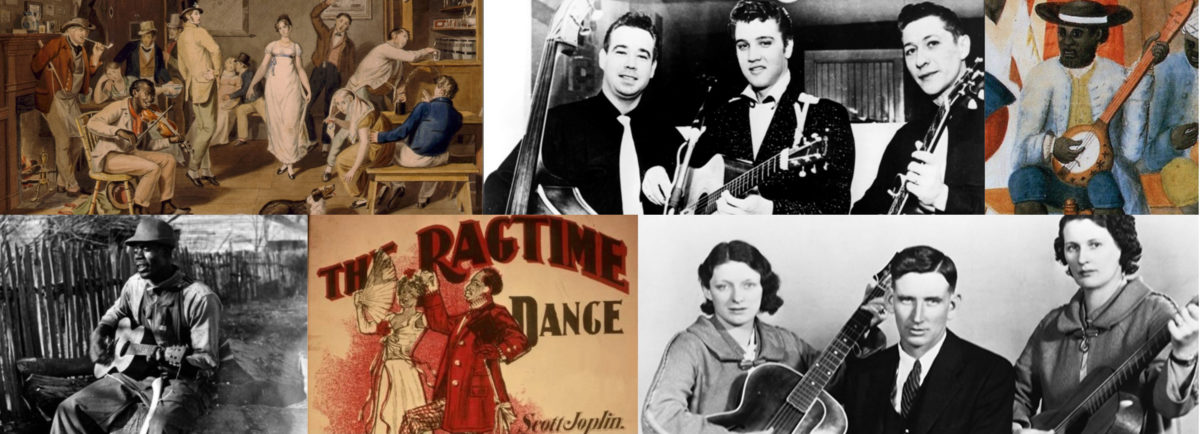Audio Investigation Slide
I Don't Want Your Millions, Mister: Audio Investigation Slide
-
- Click the link above to launch the slide.
- Click the media player in the bottom right corner of the slide to begin audio playback of the song.
- Invite students to respond to the following questions shown on the slide:
-
- Who is the singer and what has happened to him? Use the lyrics to support your answer.
- Who is “Mister,” the person that the singer is addressing?
- What do you think the singer plans to do to improve his situation?
-
- While students should be able to answer the first two questions easily, their responses to the third question may vary based on their prior knowledge of labor union history and their understanding of the mechanisms by which workers and the labor unions that advocate for them pursue their objectives. Some may likely mention striking if they are familiar with the term and associate it with labor union activity, so you may need to clarify the definition of the term. You can point out that a strike held previously might be the reason the worker no longer has a job, in which case withholding labor is no longer an option for him, in order to prompt students to consider what other options for action the worker could attempt. You can also invite students to speculate about the reasons a strike might have occurred, as their responses will likely include the basic issues that are the focus of most labor unions’ activities.
Recommendations
This song is useful to introduce a lesson on labor unions during the second industrial revolution of the late 19th and early 20th centuries.
Once students understand how labor unions use strikes and other organized actions to address issues of fair pay and hours, and safe working conditions, you can prompt them to draw connections between this information and the economic environment of the second industrial revolution. Students can infer that most businesses did not provide those things to workers, and link this to the frequency of union activity, including strikes. However, they may not recognize initially that this is because businesses were not required by law to provide any of those things. You can help them arrive at that conclusion by asking them why businesses today DO provide a minimum wage, an 8-hour workday, and ensure worker safety. This is an opportunity to address the economic changes and conditions of this period in the broader context of the basic functions of government, as laid out in the Preamble of the Constitution, and the proper scope of government power. Remind students of the Supreme Court decisions related to business in this period that struck down laws and actions intended to regulate specific business practices and policies, or stopped short of empowering the government to intervene decisively in the market economy. If laissez-faire is not already a vocabulary term that students know, this reminder illustrates the concept clearly and they can easily grasp that it is in line with the ideal of limited government. You can then encourage students to consider whether, in limiting the use of its power, the government was failing to fulfill its responsibility to provide for the general welfare.
As labor union activity was associated with various political movements during the Gilded Age and the Progressive Era, and labor reform well beyond those periods, you may also want to take time to explore some of those connections. Although the song was composed some time between 1932-1933, following a violent, year-long coal strike in Kentucky that was part of a nine-year conflict between labor and management, the issues it raises were pertinent to labor unions during the late 19th and early 20th centuries. The lyrics address the basic demands of workers, while alluding to socioeconomic class differences between workers and business owners, and mentioning explicitly aspirations for a political affiliation between labor and farmers. Because of this, it serves as an excellent foundation for examining the contrast between the bread and butter goals of unions like the American Federation of Labor and the additional far-reaching social and economic changes sought by unions like the Knights of Labor and, later, the Industrial Workers of the World. A discussion built on this contrast can encompass the differences in the activities each union engaged in, the effects of more radical ideologies on the public’s overall perception of unions, and the effectiveness of each approach. The reference to “a farmer-labor party” in the final verse should remind students of the Populist Party’s failed effort to cultivate such an alliance prior to the election of 1892, so they may be surprised to learn that such parties were organized in several states after the First World War and then joined together as a national party in 1920. Sharing this information allows students to view the struggles of labor, along with farmers, as part of a longer timeline and a more dynamic narrative than they might otherwise be inclined to do.
Vocabulary
Farmer-Labor Party – the Populist Party of the late 19th century attempted to build an alliance of farmers and laborers based upon common interests that were not prioritized by either the Democrat or Republican parties
Rolls-Royce - British-made brand of luxury automobiles
yacht - large boat with a cabin and amenities that may include living and sleeping quarters
Additional Resources
Primary Source Strategies
Printable worksheets with response prompts that guide students in analyzing songs as primary sources.

